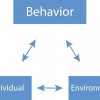Abstract
Every student in the United States has the right to an education. But not every student is ready, prepared, or willing to learn. Teachers trying to fully engage students in the learning environment can find it difficult when working with students from diverse backgrounds. Forms of diversity such as socioeconomic status, ethnicity/race, learning style, cognitive ability, gender, and ability to process and store knowledge can cause an “achievement gap” between students. This 4-page fact sheet highlights effective educational strategies for engaging students in the learning environment and assisting in closing achievement gaps. Written by Eric D. Rubenstein and Andrew C. Thoron and published by the UF Department of Agricultural Education and Communication, July 2013.
References
Bandura, A. (1986). Social foundations of thought and action: A social cognitive theory. Englewood Cliffs, NJ: Prentice Hall.
Coleman, J. S. (1966). Equality of educational opportunity (Report No. OE-3800). Washington, DC: National Center for Educational Statistics.
Marzano, R. J. (2001). Designing a new taxonomy of educational objectives. Thousand Oaks, CA: Corwin Press.
National Education Association. (n.d.) Diversity toolkit introduction. Retrieved from http://www.nea.org/tools/diversity-toolkit-introduction.html
Payne, R. K. (2005). A framework for understanding poverty, 4th edition. Highlands, TX: aha Process, Inc.
Schunk, D. H. (2012). Learning theories: An educational perspective (6th Ed). Boston, MA: Pearson Education.
Sousa, D. (1995). How the brain learns. Reston, VA: National Association of Secondary School Principals.
Tileson, D. W. (2004). What every teacher should know about diverse learners. Thousand Oaks, CA: Corwin Press.
Unless otherwise specified, articles published in the EDIS journal after January 1, 2024 are licensed under a Creative Commons Attribution-NonCommercial-NoDerivs 4.0 International (CC BY-NC-ND 4.0) license.

